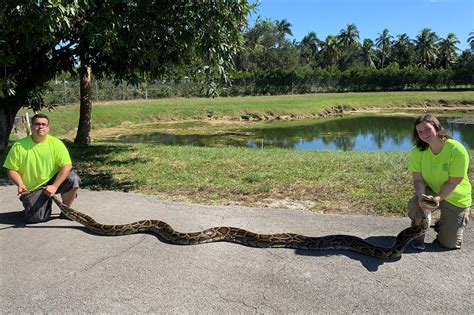
Two pigeons turned a Delta Air Lines flight into an unexpected aviary, causing a commotion among passengers as the birds flew around the cabin before the plane departed from Minneapolis-St. Paul International Airport on Wednesday.
A Delta Air Lines flight experienced an unusual delay Wednesday at Minneapolis-St. Paul International Airport when two pigeons boarded the aircraft, creating a stir among passengers and crew. The incident, captured on video and widely circulated on social media, shows the birds flying freely within the cabin, perching on seats and causing minor disruptions before they were eventually removed.
The incident occurred before takeoff, as passengers were settling in for their flight. Witnesses reported that the pigeons entered the aircraft while the doors were open during the boarding process. Once inside, the birds began exploring the cabin, much to the surprise and amusement of those on board.
“The plane’s door was open, and two pigeons flew onto the plane,” one passenger recounted. “Then they wouldn’t leave.”
Videos posted on social media show passengers pointing and laughing as the pigeons flew between rows of seats, occasionally landing on headrests and overhead compartments. While some passengers found the situation entertaining, others expressed concern about potential hygiene issues and the possibility of the birds causing damage to the aircraft’s interior.
Delta Air Lines confirmed the incident in a statement, explaining that the flight was briefly delayed while crews worked to safely remove the pigeons from the aircraft. The airline apologized to passengers for the inconvenience and assured them that the plane was thoroughly inspected before being cleared for departure.
“As you can imagine, our team at @mspairport immediately jumped in to help herd the birds off the aircraft,” Delta stated in a tweet.
The presence of the pigeons raised questions about airport security and wildlife control measures. While birds are a common sight at airports, their intrusion into the cabin of a commercial airliner is relatively rare. Airport officials are investigating how the pigeons managed to bypass security measures and gain access to the aircraft.
The incident prompted a range of reactions online, with many users sharing humorous comments and memes about the “pigeon-infested” flight. Some users joked about the pigeons attempting to “catch a flight” or “upgrade to first class,” while others questioned the effectiveness of airport security protocols.
Beyond the immediate disruption, the incident highlights the ongoing challenges that airports face in managing wildlife. Birds, in particular, can pose a significant threat to aviation safety, as collisions between birds and aircraft can cause serious damage and even lead to accidents. Airports employ a variety of methods to deter birds, including noise cannons, netting, and habitat modification.
The incident on the Delta flight serves as a reminder of the unexpected challenges that can arise in the aviation industry and the importance of maintaining vigilance in ensuring the safety and security of air travel. While the pigeons’ brief adventure may have caused a temporary inconvenience, it also provided a moment of levity and a reminder of the constant interaction between humans and wildlife in the modern world.
The flight eventually departed after a delay of approximately one hour. Passengers were offered refreshments and apologies for the inconvenience. Delta Air Lines is reviewing its procedures to prevent similar incidents from occurring in the future. The airline also commended its staff for their quick and professional response to the unusual situation.
The incident involving the pigeons on the Delta flight is not an isolated occurrence. In recent years, there have been several reports of birds entering airport terminals and even boarding aircraft. These incidents underscore the need for airports to continually improve their wildlife management strategies and security protocols.
The presence of wildlife at airports is a complex issue that requires a multi-faceted approach. In addition to deterring birds from entering airport property, it is also important to educate passengers and staff about the risks associated with wildlife and to encourage them to report any sightings of animals in unauthorized areas.
The incident on the Delta flight serves as a valuable learning opportunity for the aviation industry. By studying the circumstances surrounding the incident, airports and airlines can identify potential vulnerabilities in their security and wildlife management procedures and take steps to address them.
The incident also highlights the importance of communication and transparency in the aviation industry. By promptly informing passengers about the delay and providing updates on the situation, Delta Air Lines was able to mitigate some of the frustration and inconvenience caused by the pigeons.
The incident involving the pigeons on the Delta flight is a reminder that even the most carefully planned and executed operations can be disrupted by unexpected events. By remaining vigilant and adaptable, the aviation industry can continue to ensure the safety and security of air travel.
Delta Air Lines emphasized that the safety and comfort of its passengers are its top priorities. The airline is committed to providing a safe and enjoyable travel experience for all of its customers.
The incident involving the pigeons on the Delta flight is a testament to the resilience and adaptability of the aviation industry. Despite the unexpected challenge, the flight was eventually able to depart safely and passengers were able to reach their destinations.
The incident also highlights the importance of humor and perspective in dealing with unexpected events. While the presence of the pigeons may have been initially alarming, many passengers were able to find humor in the situation and appreciate the absurdity of it all.
The incident involving the pigeons on the Delta flight is a reminder that even in the most serious and demanding industries, there is always room for a little bit of levity and lightheartedness. By maintaining a sense of humor and perspective, we can better cope with the challenges and surprises that life throws our way.
The incident involving the pigeons on the Delta flight is a unique and memorable event that will likely be recounted and retold for years to come. It is a reminder that even in the most routine and predictable situations, there is always the potential for something unexpected and extraordinary to occur.
The incident involving the pigeons on the Delta flight is a symbol of the human capacity for resilience, adaptability, and humor. It is a reminder that even in the face of adversity, we can find ways to cope, to adapt, and to find joy in the unexpected moments of life.
The incident involving the pigeons on the Delta flight is a celebration of the human spirit. It is a reminder that we are all capable of facing challenges, overcoming obstacles, and finding beauty in the world around us.
FAQ: Pigeons on Delta Flight
-
How did the pigeons get on the plane?
- According to reports, the pigeons entered the aircraft while the doors were open during the boarding process at Minneapolis-St. Paul International Airport. The exact point of entry and circumstances are still under investigation by airport officials. As stated by one passenger, “The plane’s door was open, and two pigeons flew onto the plane.”
-
Was the flight delayed due to the pigeons?
- Yes, the Delta Air Lines flight experienced a delay of approximately one hour as crews worked to safely remove the pigeons from the aircraft. “As you can imagine, our team at @mspairport immediately jumped in to help herd the birds off the aircraft,” Delta stated in a tweet.
-
Were passengers concerned about the pigeons?
- Reactions varied. Some passengers found the situation amusing and entertaining, while others expressed concern about potential hygiene issues and the possibility of the birds causing damage to the aircraft’s interior.
-
What did Delta Air Lines do after the incident?
- Delta Air Lines apologized to passengers for the inconvenience and assured them that the plane was thoroughly inspected before being cleared for departure. Passengers were also offered refreshments. The airline is also reviewing its procedures to prevent similar incidents from occurring in the future.
-
Is this a common occurrence?
- While birds are a common sight at airports, their intrusion into the cabin of a commercial airliner is relatively rare. However, there have been other reports of birds entering airport terminals and even boarding aircraft in recent years, highlighting the ongoing challenges airports face in managing wildlife.
The incident also brings up several critical points that should be addressed to prevent similar occurrences in the future.
Security Protocol Review: Airports and airlines should rigorously review their security protocols to identify any potential vulnerabilities that could allow birds or other animals to gain unauthorized access to aircraft. This review should include an assessment of boarding procedures, door management, and the effectiveness of existing wildlife control measures.
Enhanced Wildlife Management: Airports need to implement comprehensive wildlife management strategies that are tailored to the specific environmental conditions and wildlife populations in their respective areas. These strategies should include a combination of deterrents, habitat modification, and active removal techniques.
Staff Training: Airline and airport staff should receive comprehensive training on how to respond to wildlife intrusions, including procedures for safely removing animals from aircraft and minimizing disruption to passengers. This training should also emphasize the importance of reporting any wildlife sightings to the appropriate authorities.
Passenger Communication: Airlines should develop clear communication protocols for informing passengers about wildlife-related delays and disruptions. This communication should be timely, transparent, and empathetic, and should provide passengers with regular updates on the situation.
Technology Implementation: Airports and airlines should explore the use of technology to enhance wildlife detection and control. This could include the use of radar systems, drone technology, and automated bird deterrents.
Collaborative Efforts: Effective wildlife management requires close collaboration between airports, airlines, government agencies, and wildlife experts. These stakeholders should work together to develop and implement comprehensive strategies that address the challenges of wildlife at airports.
Hygiene and Sanitation: In the aftermath of a wildlife intrusion, airlines should take immediate steps to ensure the hygiene and sanitation of the affected aircraft. This should include thorough cleaning and disinfection of the cabin to prevent the spread of disease.
Incident Reporting: Airlines and airports should establish clear procedures for reporting wildlife intrusions and near-miss events. This data can be used to identify trends, assess the effectiveness of existing control measures, and develop targeted interventions.
Risk Assessment: Airports and airlines should conduct regular risk assessments to identify potential wildlife hazards and to evaluate the effectiveness of existing control measures. This assessment should take into account the specific environmental conditions and wildlife populations in the area.
Public Awareness: Airports and airlines should raise public awareness about the risks associated with wildlife at airports and the importance of reporting any sightings of animals in unauthorized areas. This can be done through educational campaigns, social media, and other outreach activities.
Root Cause Analysis: A thorough investigation should be conducted to determine the root causes of the pigeon intrusion, including an examination of factors such as door management practices, security protocols, and the effectiveness of existing wildlife control measures.
Preventive Measures: Based on the findings of the root cause analysis, preventive measures should be implemented to address the underlying causes of the intrusion and to prevent similar incidents from occurring in the future. These measures could include changes to boarding procedures, enhanced security protocols, and improved wildlife control strategies.
Contingency Planning: Airlines and airports should develop contingency plans for managing wildlife intrusions, including procedures for safely removing animals from aircraft, minimizing disruption to passengers, and ensuring the hygiene and sanitation of affected aircraft.
Lessons Learned: The incident should be used as a learning opportunity to improve wildlife management practices and to prevent similar incidents from occurring in the future. Lessons learned should be shared with other airlines and airports to promote industry-wide improvements in wildlife control.
Continuous Improvement: Wildlife management is an ongoing process that requires continuous improvement. Airlines and airports should regularly review their wildlife management practices and make adjustments as needed to ensure that they are effective and up-to-date.
Stakeholder Engagement: Airlines and airports should engage with stakeholders, including government agencies, wildlife experts, and community groups, to develop and implement effective wildlife management strategies. This collaboration can help to ensure that wildlife management practices are aligned with the needs and concerns of all stakeholders.
Funding and Resources: Adequate funding and resources should be allocated to support wildlife management efforts at airports. This funding should be used to implement effective control measures, train staff, and conduct research on wildlife behavior and control techniques.
Regulatory Oversight: Government agencies should provide regulatory oversight of wildlife management practices at airports to ensure that they are effective and compliant with applicable laws and regulations. This oversight can help to promote accountability and to ensure that airports are taking the necessary steps to manage wildlife risks.
Best Practices: Airlines and airports should adopt best practices for wildlife management, including the use of non-lethal control methods whenever possible and the implementation of comprehensive monitoring and evaluation programs. These best practices can help to minimize the impact of wildlife management activities on the environment and on wildlife populations.
Environmental Considerations: Wildlife management practices should be environmentally sound and should take into account the potential impacts on non-target species and on the surrounding ecosystem. This requires careful planning and the use of environmentally friendly control methods.
Human-Wildlife Conflict Mitigation: Wildlife management practices should aim to mitigate human-wildlife conflict and to promote coexistence between humans and wildlife. This can be achieved through education, outreach, and the implementation of proactive control measures.
Ethical Considerations: Wildlife management practices should be guided by ethical considerations and should be conducted in a humane and responsible manner. This requires careful consideration of the welfare of animals and the potential impacts of control measures on their behavior and populations.
Innovation and Research: Airlines and airports should support innovation and research in wildlife management to develop new and more effective control techniques. This can help to improve the safety and efficiency of air travel and to minimize the impact of wildlife on aviation operations.
Data Collection and Analysis: Airlines and airports should collect and analyze data on wildlife intrusions and near-miss events to identify trends, assess the effectiveness of control measures, and develop targeted interventions. This data can also be used to inform risk assessments and to support continuous improvement efforts.
Risk Communication: Airlines and airports should communicate effectively with passengers and the public about the risks associated with wildlife at airports and the measures that are being taken to manage these risks. This communication can help to build trust and to ensure that passengers are informed about potential safety concerns.
Emergency Response: Airlines and airports should have emergency response plans in place to manage wildlife intrusions and other wildlife-related incidents. These plans should include procedures for safely removing animals from aircraft, minimizing disruption to passengers, and ensuring the hygiene and sanitation of affected aircraft.
Collaboration with Wildlife Rehabilitation Centers: Airlines and airports should collaborate with local wildlife rehabilitation centers to provide care for injured or orphaned animals that are found on airport property. This collaboration can help to ensure that animals are treated humanely and that they are returned to the wild whenever possible.
Habitat Management: Airports should manage the habitat on and around their property to minimize the attractiveness of the area to wildlife. This can be achieved through vegetation management, water management, and the removal of food sources.
Deterrent Strategies: Airports should implement a variety of deterrent strategies to discourage wildlife from entering airport property. These strategies can include the use of noise cannons, visual deterrents, and physical barriers.
Monitoring and Evaluation: Airports should monitor and evaluate the effectiveness of their wildlife management practices to ensure that they are achieving their intended goals. This monitoring can include surveys of wildlife populations, tracking of wildlife intrusions, and assessment of the impact of control measures on wildlife behavior.
By implementing these comprehensive measures, airports and airlines can work together to minimize the risks associated with wildlife and to ensure the safety and security of air travel. The pigeon incident serves as a stark reminder of the importance of vigilance and proactive measures in managing wildlife hazards in the aviation environment. Continuous improvements in security, wildlife management, staff training, and passenger communication are crucial to preventing similar incidents and maintaining public confidence in the safety of air travel. The aviation industry must learn from this incident and use it as an opportunity to strengthen its defenses against unexpected intrusions, ensuring a safer and more secure travel experience for all. The collaborative effort of airports, airlines, government agencies, and wildlife experts is essential in developing and implementing effective strategies that address the challenges posed by wildlife in the aviation environment. These strategies should be tailored to the specific needs of each airport, taking into account the local environment, wildlife populations, and operational considerations. Proactive measures, such as habitat management and deterrent strategies, should be implemented to prevent wildlife from entering airport property in the first place. When intrusions do occur, emergency response plans should be in place to ensure that they are managed safely and effectively. Furthermore, ongoing monitoring and evaluation are necessary to assess the effectiveness of wildlife management practices and to identify areas for improvement. The aviation industry must remain vigilant and adaptable in its approach to wildlife management, constantly seeking new and innovative ways to minimize the risks associated with wildlife and to ensure the safety and security of air travel. This commitment to continuous improvement will help to protect passengers, crew, and aircraft from the potential hazards posed by wildlife and to maintain public confidence in the safety of air travel.
The incident with the pigeons on the Delta flight also highlights the crucial role of technology in modern aviation wildlife management. Utilizing advanced radar systems, for instance, can allow for early detection of bird flocks approaching the airport, enabling preemptive deployment of deterrent measures. Drones equipped with specialized cameras and acoustic devices can be used to monitor wildlife activity on and around the airport perimeter, providing real-time data for informed decision-making. Furthermore, automated bird deterrent systems that emit specific sounds or visual stimuli can be strategically placed to discourage birds from entering sensitive areas. These technologies, combined with traditional methods, offer a multi-layered approach to wildlife control, significantly enhancing the safety and efficiency of airport operations. The investment in and integration of such technologies are essential for modern airports to effectively manage wildlife risks and prevent incidents like the one involving the pigeons. Moreover, the use of data analytics and artificial intelligence can further improve wildlife management by analyzing historical data on bird strikes and wildlife activity to predict future patterns and optimize deterrent strategies. This proactive approach allows airports to anticipate potential hazards and deploy resources more efficiently, minimizing the risk of wildlife-related incidents. In addition, collaboration with research institutions and technology companies can foster the development of innovative solutions tailored to the specific challenges faced by individual airports. By embracing technology and data-driven strategies, the aviation industry can enhance its ability to mitigate wildlife risks and ensure the safety and reliability of air travel. This commitment to innovation will not only protect passengers and crew but also contribute to the long-term sustainability of the aviation industry by reducing the economic and environmental costs associated with wildlife-related incidents.
In conclusion, the pigeon incident on the Delta flight serves as a valuable case study for the aviation industry, underscoring the importance of comprehensive and proactive wildlife management strategies. It highlights the need for continuous improvements in security protocols, staff training, technology integration, and passenger communication. By learning from this incident and implementing the recommended measures, airports and airlines can enhance their ability to mitigate wildlife risks, ensuring a safer and more secure travel experience for all. The incident also emphasizes the critical role of collaboration among stakeholders, including government agencies, wildlife experts, and community groups, in developing and implementing effective wildlife management strategies. Only through a concerted and coordinated effort can the aviation industry effectively address the challenges posed by wildlife and maintain the highest standards of safety and security. Furthermore, the incident serves as a reminder that even in the most carefully planned and executed operations, unexpected events can occur. Therefore, adaptability and resilience are essential qualities for the aviation industry. By fostering a culture of continuous improvement and embracing innovation, the industry can better prepare for and respond to unforeseen challenges, ensuring the continued safety and reliability of air travel. The incident with the pigeons, while seemingly minor, provides valuable insights into the complexities of wildlife management and the importance of vigilance in the aviation environment. It is a call to action for the industry to prioritize wildlife management and to invest in the resources and strategies necessary to mitigate wildlife risks effectively. Only through a proactive and comprehensive approach can the aviation industry ensure the safety and security of its passengers and crew and maintain public confidence in the safety of air travel. The incident serves as a reminder that the aviation industry is constantly evolving and that continuous learning and adaptation are essential for maintaining the highest standards of safety and security. By embracing innovation and collaboration, the industry can effectively address the challenges posed by wildlife and ensure a safe and reliable travel experience for all.









